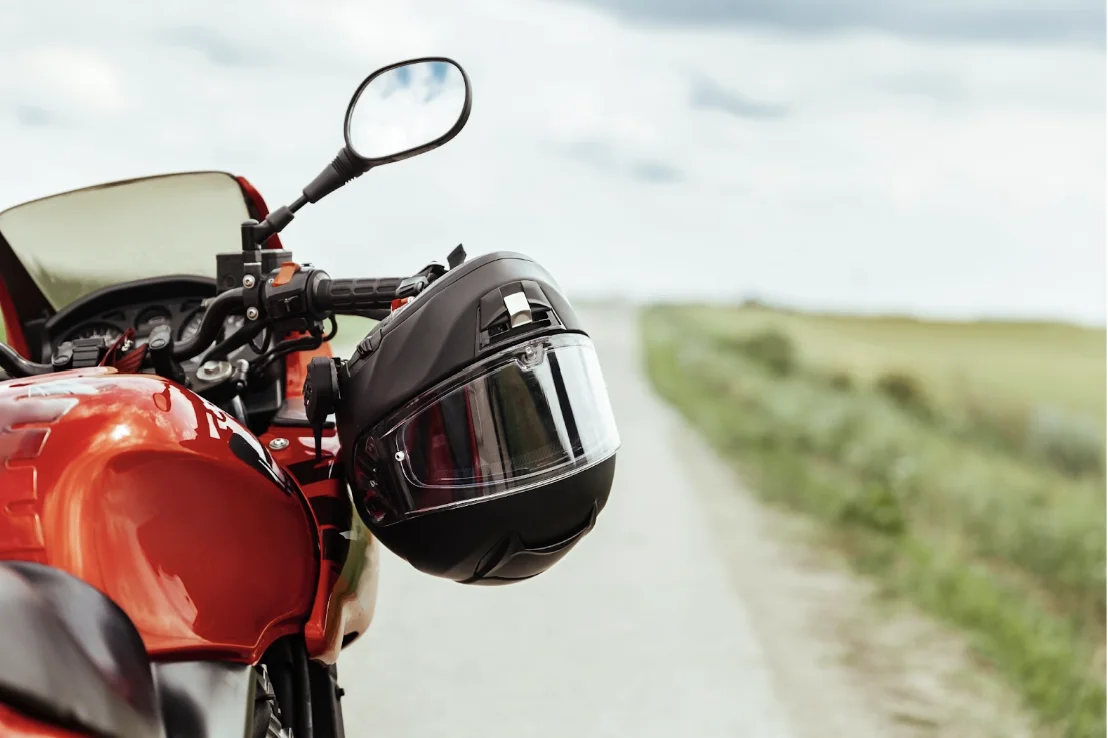The excitement of riding on the open road can be very appealing to motorcyclists. The sense of freedom, the wind on your face, and the thrill of adventure all make riding a motorcycle a special experience. However, because the road can be unpredictable, it’s important to be well-prepared and mindful of others to keep everyone safe.
Motorcycle Riding Tips
-
Legal Requirements
Before you start your motorcycle, you must ensure you comply with the law. Each state has its own rules for obtaining a motorcycle license. Reaching out to your state’s Department of Motor Vehicles (DMV) will give you the details you need to get your license and learn about the traffic laws for motorcyclists. Also, talking to insurance providers about your coverage options will help you select the best policy to safeguard you financially in an accident.
-
Motorcycle Training Classes
Whether you are a novice or an experienced rider, participating in motorcycle training classes can significantly enhance your riding skills. These classes offer hands-on experience and teach critical skills such as effective braking techniques, collision avoidance, and mastering difficult turns. Advanced riding courses refine your skills, making you a safer and more proficient rider.
-
Safety Gear
The significance of using proper safety gear cannot be emphasized enough. Key items include a DOT-approved helmet, which is crucial for preventing serious head injuries. Additionally, padded or layered clothing, gloves, and protective eyewear can significantly decrease the likelihood of injuries if an accident occurs. Although helmets may not be required in every state, they are highly recommended as critical to safe riding.
Routine Motorcycle Inspection
It’s crucial to regularly check your motorcycle to ensure it’s safe to ride. You should inspect key components such as lights, turn signals, mirrors, brakes, and fuel systems. A well-maintained motorcycle is safer and less prone to breakdowns. Additionally, opting for a motorcycle with advanced braking systems, like anti lock brakes, can prevent the wheels from locking during hard braking, helping you avoid skids and maintain control.
Safe Riding Practices
Avoid Impairments
Safe motorcycle operation requires balance, coordination, and good judgment. Riding under the influence of alcohol, prescription, or over-the-counter medications can impair these abilities, increasing the risk of accidents. Always ride sober and ensure you are in the best condition to handle the demands of the road.
Stay Alert
Active engagement and constant vigilance are crucial when riding. Always be on the lookout for other vehicles, road hazards, and changes in road conditions. Being courteous and respectful to other road users enhances everyone’s safety. Additionally, wearing bright clothing and using headlights even during the day can increase your visibility to other drivers.
Keep Your Distance
Following other vehicles too closely can shorten the time you have to react if they stop suddenly. Keeping a safe distance between you and the vehicle ahead allows you more time to respond to surprises. This is especially important in bad weather, heavy traffic, and roads with curves and intersections.
Obey the Laws
Adhering to traffic laws, such as speed limits and using turn signals, is essential. Avoid practices like lane splitting, which can be dangerous and illegal in many areas. Familiarize yourself with the specific laws regarding riding with passengers to ensure your safety and that of your passengers.
Keep an Eye on the Weather
Weather conditions can greatly affect your motorcycle ride. Challenges such as rain, ice, and fog can make it hard to handle your bike and lower your visibility to other drivers. CIt’shecking the weather forecast before you leave is wise, as it helps you avoid hazardous conditions and choose safer travel routes.
Motorcycle Awareness for Car Drivers
Drivers of larger vehicles must also ensure the safety of motorcyclists. It is crucial to be alert and aware of motorcycles on the road. Always use turn signals when changing lanes or merging into traffic, and check mirrors and blind spots for motorcycles. Motorcycles may stop quicker than cars; thus, maintaining a safe following distance is necessary.
Respect for motorcyclists includes acknowledging their full use of a lane—never attempting to share a lane with a motorcycle. Defensive driving practices such as obeying speed limits and avoiding distractions can also contribute significantly to road safety.
Conclusion
Both motorcyclists and car drivers share the responsibility to improve road safety. By adhering to these motorcycle safety guidelines and staying alert, we can lower the number of accidents and create safer roads for everyone. Ongoing education on motorcycle safety and increased awareness will further boost this effort, building a culture of respect and caution on the roads.
FAQs
What are the best practices for motorcycle group riding?
When riding in a group, maintain a staggered formation to keep safe distances between motorcycles. Establish hand signals for communication, plan your route in advance, and make sure all riders are aware of the group’s riding protocols.
Are there any specific tips for riding in the rain?
When riding in the rain, reduce your speed to accommodate for slippery surfaces and increased stopping distances. Use rainproof gear to stay dry and maintain visibility. Avoid puddles and painted surfaces as they can be particularly slick.
How do I handle riding in high wind conditions?
In high winds, keep a firm grip on the handlebars and be prepared to lean into the wind slightly to maintain control. Be especially cautious when moving from sheltered areas to exposed areas where the wind can suddenly catch the bike.
What is the safest way to carry a passenger on a motorcycle?
Ensure your motorcycle is designed to carry a passenger. The passenger should wear appropriate safety gear, sit as close to the rider as possible, keep their feet on the footrests, and hold onto the bike’s passenger handholds or the rider’s waist.
Get the right coverage for your car with tutenagency
New tutenagency customers?
Quote auto insurance online or call (334) 502-5111 to insure your vehicle.
Legal Disclaimer: ADVERTISING MATERIAL ONLY. Do not rely on this site or this article for legal or financial advice. The information provided on 210agency.com is strictly for educational purposes and to provide you with general educational information. Since state laws and financial regulations are subject to change, please schedule an appointment with an attorney or qualified financial advisor in your area to further discuss your personal situation. This public information is neither intended to, nor will it, create an attorney-client or financial representative relationship.

